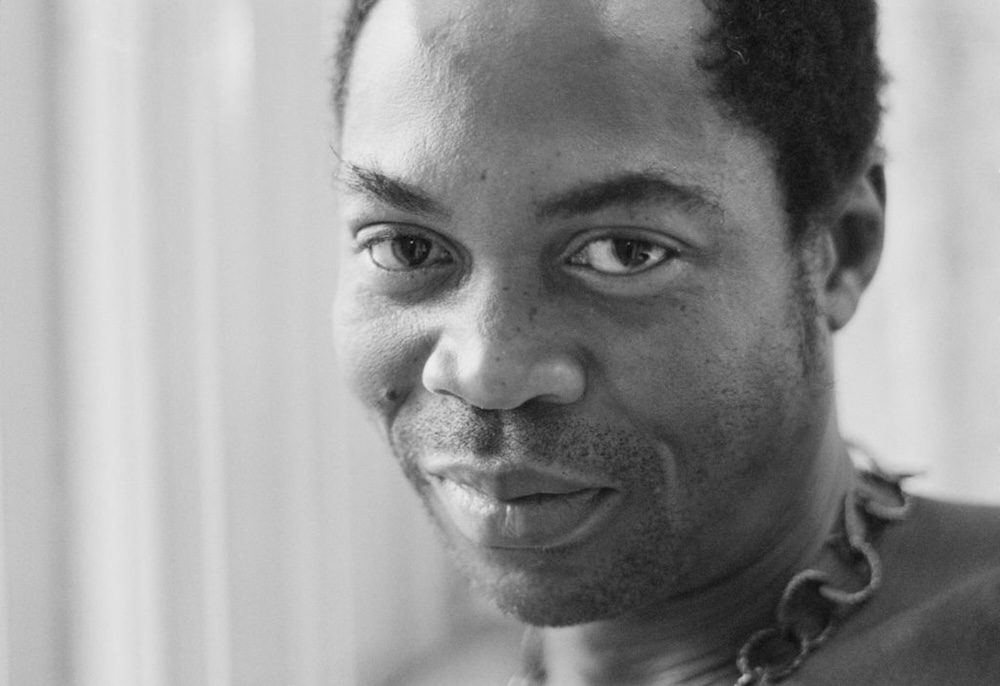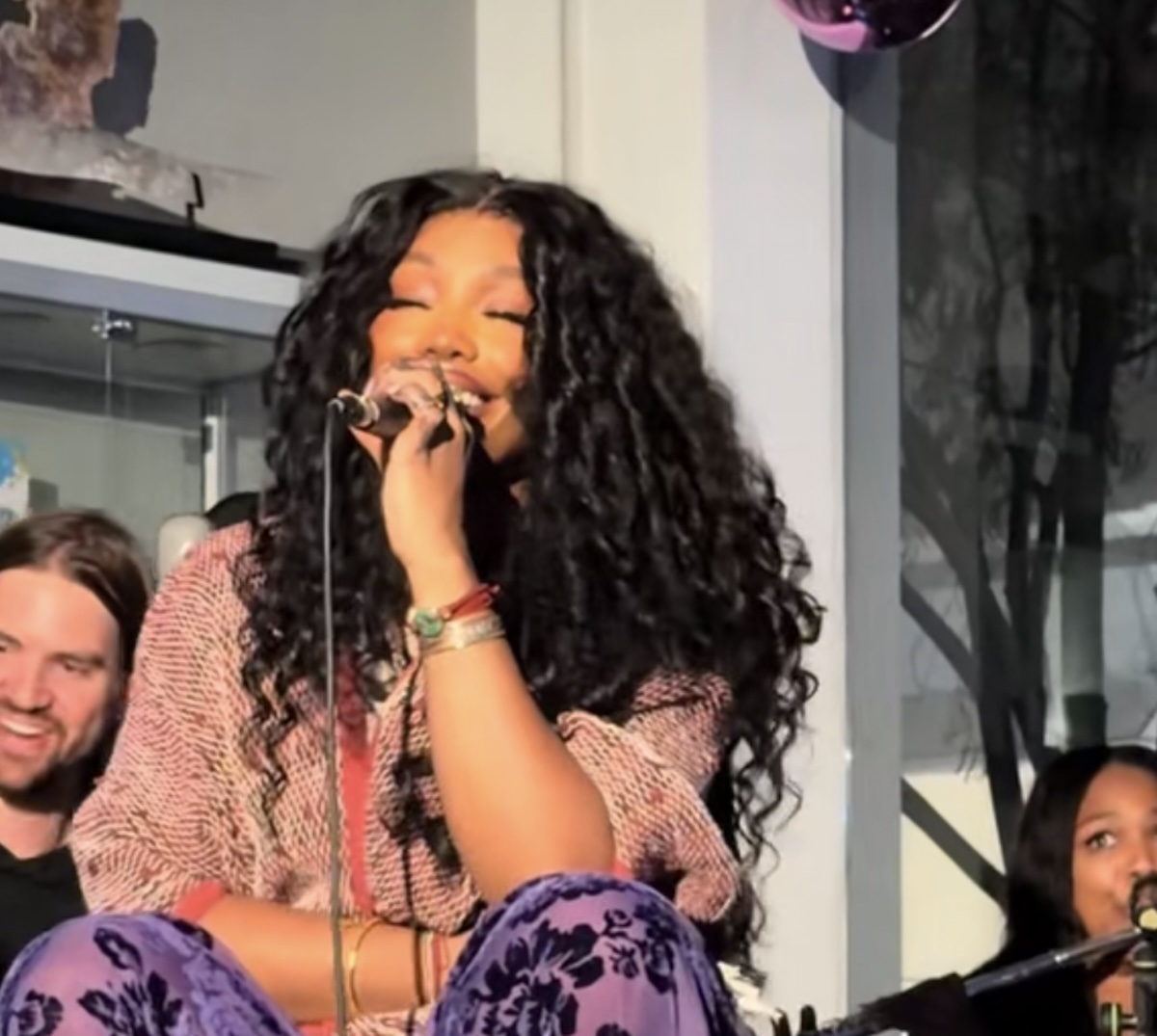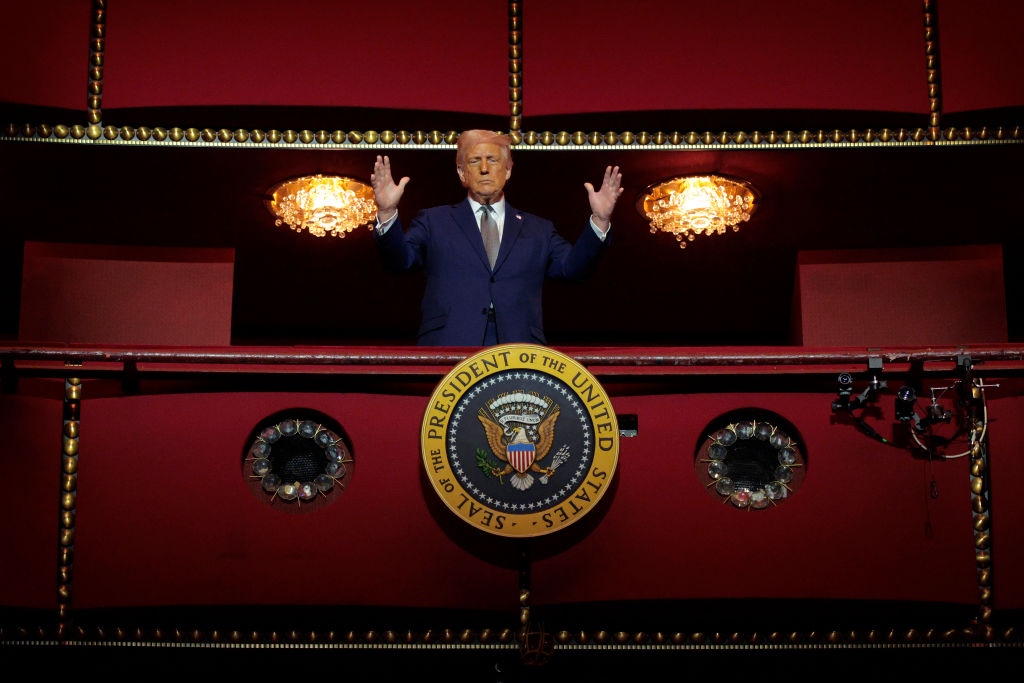David Bowie died yesterday. Bowie's Facebook page made the announcement this morning: Bowie had been fighting cancer for 18 months, and he died "peacefully" while surrounded by family. He turned 69 on Friday, the same day that he released his final album, the raw and vital ? (Blackstar).
Bowie's son, the film director Duncan Jones, confirmed Bowie's death on Twitter this morning, posting a photo of his infant self with Bowie and writing, "very sorry and sad to say it's true." The Hollywood Reporter has also confirmed it.
Bowie was born David Jones into a working-class London family. (Later, when he took on the Bowie name, it was so he wouldn't be confused with Davy Jones, the Monkees singer.) As a child, he injured one eye after his friend George Underwood, who'd later do the artwork for some of his albums, punched him while the two were fighting over a girl. The injury would also lead him to have two differently-colored eyes. Bowie became obsessed with early rock and roll at a young age, and he formed his first band, the Konrads, in 1962, when he was 15. In 1964, he released his first solo single, "Liza Jane"; it's B-side was a "Louie Louie" cover.
Bowie spent the next two years singing with a series of bands -- the Lower Third, the Buzz, the Riot Squad -- before adapting the Bowie name and the beginnings of its persona in 1967. That same year, he released "The Laughing Gnome," his first single under the Bowie name, and his self-titled debut album. On those early records, Bowie specialized in a form of bugged-out psych-rock that had some of the same wild, loose spirit as the Syd Barrett-era Pink Floyd.
In the two years after he released that debut album, which was commercially unsuccessful, Bowie developed an interest in playing around with his image. He studied mime and avant-garde theater, and he returned in 1969 with "Space Oddity," which was both his first hit (it went top five in the UK) and his first iconic song. His second album, which would originally come to be known as Space Oddity, combined the florid folk-rock of its day with a sweeping, unearthly sense of perspective.
Within the next year, Bowie married Angela Barnett, who became his first wife, and began concocting the style and idea of a costumed, conceptual rock band. While the future T. Rex frontman Marc Bolan had played guitar on his records, Bowie formed a new band that featured people like the flamboyant guitarist Mick Ronson and Tony Visconti, the bassist who would go on to produce many of his records. Bowie used that sound and that band on his next two albums, 1970's The Man Who Sold The World and 1971's Hunky Dory. At the same time, he grew into his androgynous persona, something that was new and unique when he first started doing it. It would go on to influence generation after generation of performative rockers.
Bowie introduced his next persona in 1972, with the release of his album The Rise And Fall Of The Spiders From Mars. The album was pretty much the foundational text of glam rock, the genre that would take over UK pop in the early-'70s. Thus, Bowie ushered in one of the most enduring and exciting eras in pop-music history, and he further advanced it by writing "All The Young Dudes" for Mott The Hoople and singing backup on Lou Reed's Transformer. The conceptual idea of the band and the Ziggy Stardust album -- Bowie as a visiting alien, freaking out the earthlings and simulating oral sex onstage -- changed ideas about what pop stardom could mean. The albums that Bowie released under his Ziggy Stardust persona -- Spiders From Mars, Aladdin Sane, Diamond Dogs -- are all classics that hold up remarkably well.
As his career was exploding, Bowie was dealing with cocaine addiction and emotional issues, and he was also getting interested in American funk and soul, especially the sweeping and heavily orchestrated '70s sound. On his next album, 1975's Young Americans, he tapped into that sound, switched up his image completely, and alienated much of his original fanbase, something that he'd do again and again. During that period, he scored his first American #1 with "Fame," a lithe workout that he co-wrote with John Lennon. And while he was touring that album, Bowie fell in love with krautrock and recorded Station To Station, the experimental and coke-damaged album that marked the beginning of his Thin White Duke phase.
In the late '70s, he moved to Berlin, where he shared an apartment with Iggy Pop and produced Pop's solo albums The Idiot and Lust For Life. (He'd also produced the Stooges' 1973 album Raw Power, a punk rock classic that still counts as a footnote in a career as rich and wide-ranging as Bowie's.) During that period, he and producer Brian Eno put together the "Berlin trilogy" of albums -- Low, "Heroes", Lodger -- that probably still serve as his greatest artistic legacy. Those albums had huge, stadium-level-popular rock anthems, and they also had intense ambient pieces that continue to blow minds to this day. During this era, Bowie could record a grinding and emotive instrumental with Eno one day and show up on Bing Crosby's Christmas special the next. We'll never see a run like it again.
In 1976, Bowie played the lead in Nicolas Roeg's experimental sci-fi movie The Man Who Fell To Earth, beginning an acting career that would balance challenging fare like Martin Scorsese's The Last Temptation Of Christ with commercial experiments like Jim Henson's Labyrinth. By Bowie's 1980 album Scary Monsters (And Super Creeps), Bowie had moved onto synthpop and new wave; it was the first time that Bowie would be influenced by artists who he had already influenced. He made "Under Pressure" with Queen in 1981, and he scored his second U.S. #1 in 1983 with "Let's Dance," a disco-rocker that he co-produced with Chic's Nile Rodgers.
But after hitting what may have been his global commercial apex, Bowie went through a down period, recording cheesy duets with fellow rock stars and making two albums with the not-especially-well-remembered rock group Tin Machine. Even then, though, he helped pioneer theatrical and larger-than-life stadium-rock aesthetics with his 1987 Glass Spider tour. In 1990, he married the Somali supermodel Iman.
During the '90s, Bowie entered his elder-statesman era, but he did it while still pushing himself musically. He tinkered around with industrial and jungle music, and he partnered with Nine Inch Nails for 1996's co-headlining Outside tour. After suffering a heart attack in 2004, Bowie performed only rarely, though he was a common sight at shows in New York; a band's first big NYC show wouldn't seem like that big of a deal unless Bowie was in the audience. He largely stopped recording in the years between his 2003 album Reality and The Next Day, the 2013 LP that pulled sounds and ideas from eras across Bowie's career and proved that he could still do something powerful. And with ?, an album that's only a few days old as I write this, he made perhaps his most musically extreme work, a discordant jazz-rock experiment that will doubtless change in meaning now that we know he must've intended it as his final statement.
We won't ever see Bowie's like again. He was a transcendent star with earthshaking charisma and an adventurous cool-hunter soul that kept him relevant for decades. At this point, even the idea of cataloging his influence is an impossible task; it crosses genres and destinations and forms of media. He helped shape the world as we know it, and very little of the music that we celebrate and debate on Stereogum could've existed without him. And now, let's watch some videos from Bowie's career.
[videoembed size="full_width" alignment="center"][/videoembed]
[videoembed size="full_width" alignment="center"][/videoembed]
[videoembed size="full_width" alignment="center"][/videoembed]
[videoembed size="full_width" alignment="center"][/videoembed]
[videoembed size="full_width" alignment="center"][/videoembed]
[videoembed size="full_width" alignment="center"][/videoembed]
[videoembed size="full_width" alignment="center"][/videoembed]
[videoembed size="full_width" alignment="center"][/videoembed]
[videoembed size="full_width" alignment="center"][/videoembed]
[videoembed size="full_width" alignment="center"][/videoembed]






